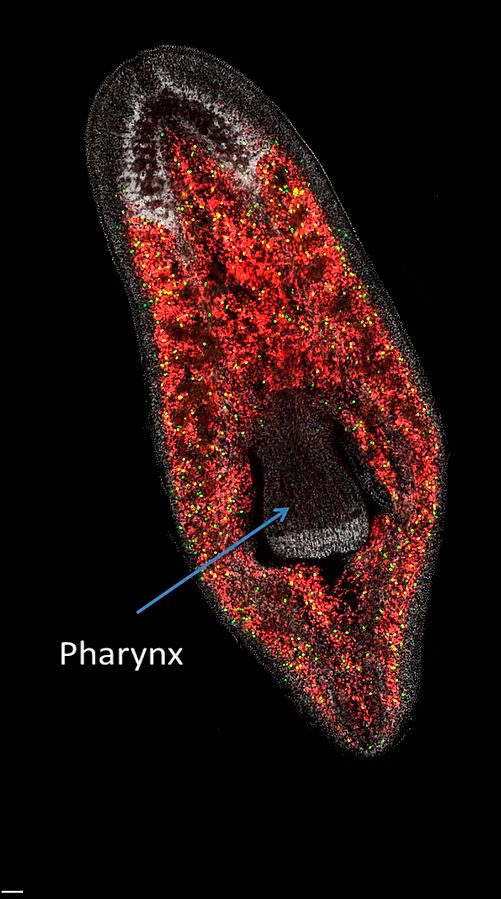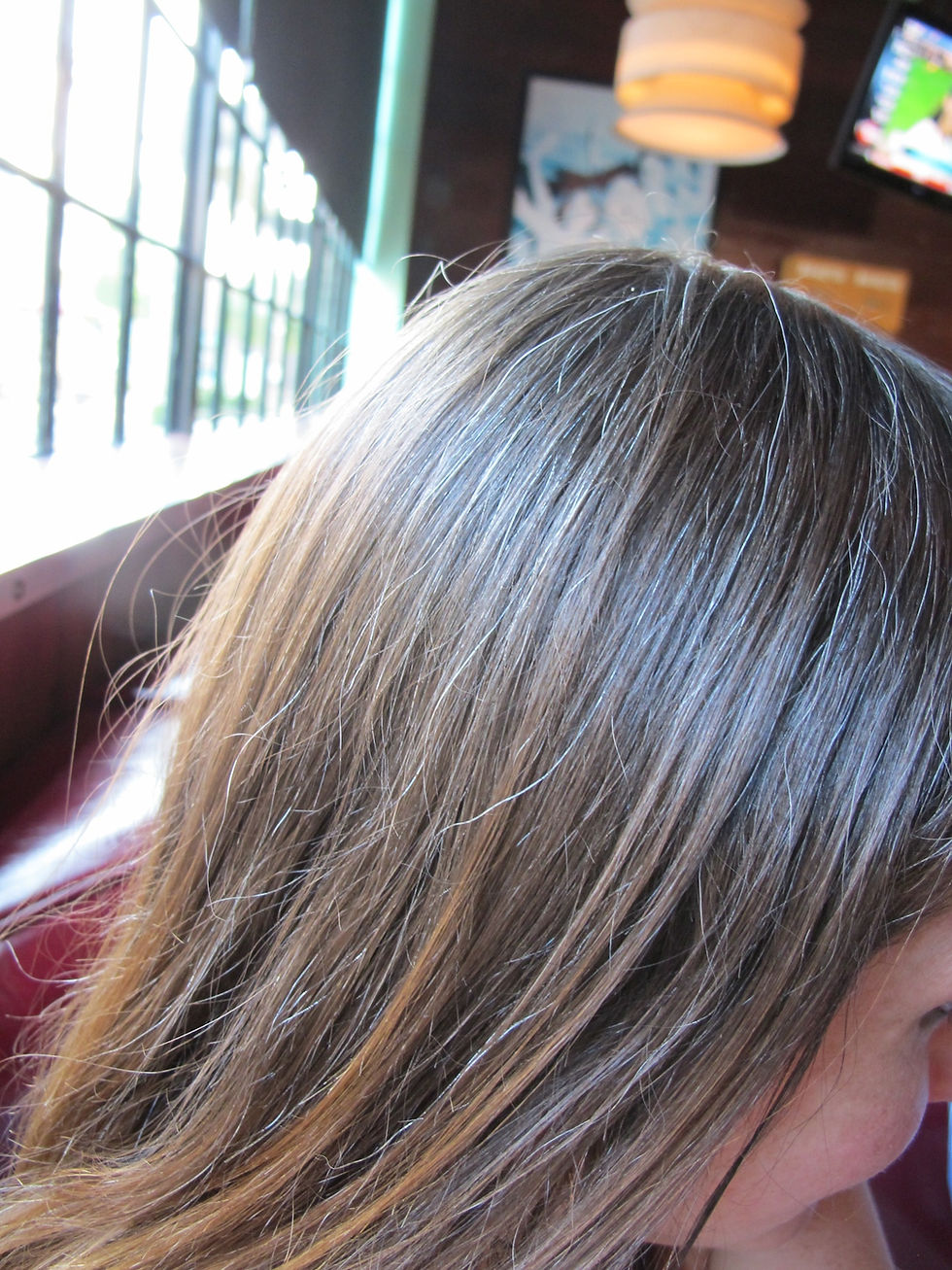The Peculiar Powers of Planarians
- Joanne Lee
- Apr 8, 2022
- 4 min read
Isabel Cantú
Regeneration is not an entirely unique characteristic for a creature to have, especially not among marine life. Starfish can regrow their arms, axolotl can regenerate their limbs, and squishy planarian worms can be chopped into several pieces and regenerate heads, tails, and internal organs. It was once unheard of for a creature to be able to reform something as vital as the head and central nervous system, but this is exactly what teeny planarian flatworms are able to do! At first glance they have simple bodies and unremarkable features, but they have an incredible amount of stem cells called neoblasts everywhere within their body except the pharynx. Amputation of their bodies activates these stem cells so they can begin the process of regeneration in a way unique to them. They are able to regenerate heads and organs to create entirely new worms from a single cut up planarian body. It’s the hope of many that we can take what we learn from these flatworms and apply them to human regeneration—perhaps not as extreme as regrowing a head, but as significant as regrowing tissues or some body parts.

Pluripotent stem cells, special cells that can form any body part, make up about a fifth of a planarian’s body. In contrast, humans only have these stem cells as embryos when our organs are forming. So while we are not able to form entirely new organs and limbs, planarians are. A planarian that had its head and tail cut off was able to regrow them both in three weeks. Slowly, during the first few days, eyes started to form on the stump of the head, before eventually a see-through head and tail regenerated and gave the worm a ghostly appearance. These translucent cells are collectively referred to as a blastema. The final week was when the brown hue returned to the entire planarian’s body, leaving it pretty much the same as it was before its head and tail were chopped. This also means that planarians can reproduce asexually, breaking their body into two to create a new worm. That doesn’t mean that every planarian chooses to do so, since some instead reproduce sexually by mating and laying eggs.

It is not as simple as regrowing a new body part, but rather regrowing entirely new neurons of different types that allow planarians to sense their surroundings again. The pharynx is one part of a planarian that is unique—it has no stem cells whatsoever. The pharynx can be chemically removed when a planarian is soaked in sodium azide, a salt, at which point twenty genes activate and neoblasts begin to divide to regenerate the organ. In these cases, where planarians had their pharynx removed and needed to regenerate them, everything went fine except when a gene called FoxA was absent. In both invertebrates and vertebrates, FoxA specifies what cells will become which tissues in the digestive system. In mammals, it even controls how neurons produce dopamine. FoxA is thus incredibly important—without it, there would be nothing organizing the formation of specialized structures. When FoxA is removed, a planarian’s stem cells do not cluster and begin to heal any amputations or missing organs. Instead, they scatter to other parts of the body and fail to coordinate a proper healing effort.
There once were speculations that there were limits to this regeneration aside from an absence of FoxA or other critical gene, but a planarian that successfully regenerated after being cut into 279 pieces proved otherwise. Besides tinkering with genes, there is very little that limits a planarian’s regeneration. Any piece cut from a planarian will simply bounce back into a new worm. Since planarians have such simple bodies, it is hard to give multiple worms an identical wound to study gene activation—everywhere their bodies are like a dull brown sponge. This acts as a barrier to the study of their masterful regeneration, which could prove exceptionally useful at helping people regenerate large body parts or organs.
It is already known that planarians regenerate with the help of their abundance of stem cells, but how they do so is pretty obscure. While the genes that activate during regeneration have been identified, why and how they activate is still unclear and leaves plenty of questions concerning the role of FoxA in regeneration. It is already a vital gene in more than just planarians, helping to coordinate tissue formation and what cells eventually become. Once these peculiar regenerative powers are understood, perhaps we too will be able to direct stem cells to heal our bodies and organs in the same ways planarians do, defying all odds along the way.
Works Cited
No changes were made, File:Planaria torva.jpg - Wikimedia Commons, License: Creative Commons — Attribution 4.0 International — CC BY 4.0
No changes were made, File:Neoblastos.jpg - Wikimedia Commons, License: Creative Commons Legal Code
Educational Questions:
Q. What are planarians and why are they unique?
Planarians are flatworms that have squishy, largely unremarkable bodies, but which have the ability to regenerate even the harshest of amputations and organ removals. If their heads are cut off, give them three weeks and their head will have grown back. The same goes for their tail, midsections, and any other part of the body.
Q. Why is FoxA so important to planarians?
Although we still don’t know exactly what makes planarians such good healers, it is known that a gene called FoxA helps direct stem cells to repair amputated body parts and become specialized cells. Without this gene it’s nearly impossible for planarians to regenerate properly, since neoblasts scatter across the body and do not divide where they should.
Q. Are there limits to planarian regeneration?
Besides removing genes, there is not a lot that will prevent a planarian’s regeneration—not even over 200 cuts to their bodies will do the trick. This is what makes them such alluring subjects to study when it comes to stem cell treatments and potentially using their powers to treat humans who have a lost organ or amputated limb.




Comments